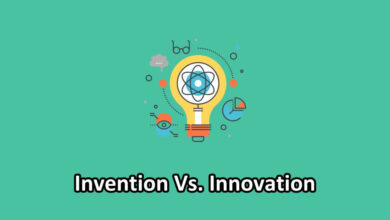Welcome to the world of policies and procedures, where the threads of organizational success are intricately woven. Have you ever wondered how businesses maintain order and consistency in their operations? Well, enter the realm of policies and procedures—a fascinating duo that forms the backbone of every well-structured entity.
Before we dive deeper, let’s get acquainted with the dynamic duo – Policy and Procedure. Policies serve as guiding principles, shaping the organization’s culture and decision-making, while procedures are detailed step-by-step instructions on how tasks are accomplished.
Policy Vs. Procedure (A Comparison)
| Policy | Procedure |
|---|---|
| Policies serve as guiding principles for an organization, akin to a constitution dictating the dos and don'ts. | Procedures are the choreographers of organizational operations, meticulously detailing the steps to execute tasks. |
| Policies provide overarching guiding principles, serving as a framework for decision-making. | Procedures furnish explicit step-by-step instructions, leaving little room for interpretation, and ensuring uniformity in task execution. |
| A Policy is inherently flexible, allowing for interpretation and adaptation to diverse situations. | A Procedure is rigid, and designed to ensure consistency and precision in task execution. |
| Policies have a broad organizational scope, influencing and guiding decisions and behaviors across the entire company. | Procedures are narrow in scope, focusing on specific tasks or processes within the organization. |
| They are often formulated by top-level management, reflecting the organization's overall mission, values, and strategic objectives. | They are typically developed at operational levels by individuals familiar with the specific tasks, ensuring practicality and alignment with policy guidelines. |
| Policies are adaptable, allowing for adjustments in response to changing circumstances, new regulations, or shifts in organizational strategy. | Procedures are more resistant to change due to their precision and specificity. Changes in procedures may require thorough evaluation to maintain efficiency and consistency in task execution. |
What is a Policy?
Policies are the North Stars of an organization, providing a strategic framework for decision-making. They embody the guiding principles and values, steering individuals towards actions aligned with the company’s objectives.
They encapsulate the collective ethos, values, and strategic direction, forming the bedrock upon which decisions are made. Picture policies as the compass, offering a consistent sense of direction in the ever-changing organizational landscape.
Characteristics of a Policy
- Clear Intent: Policies convey a clear purpose, outlining the organization’s stance on a particular matter.
- Consistency: They ensure uniformity by applying standards across the organization.
- Authoritative: Policies are authoritative directives, often emanating from top-level management.
- Adaptable: While stable, policies allow for adaptation to changing circumstances.
Importance of Policies in Organizational Settings
In the organizational orchestra, policies play the conductor’s role. They harmonize actions, fostering a cohesive work environment. By setting expectations and standards, policies mitigate risks and contribute to the company’s overall stability.
What is a Procedure?
Procedures are the choreography of tasks within an organization—a series of predefined steps ensuring the efficient and consistent execution of activities. Think of them as the script in a play, providing actors (employees) with a clear sequence of actions to achieve specific goals.
In essence, procedures are the roadmap guiding individuals through the intricacies of their roles, ensuring a harmonious performance on the organizational stage.
Characteristics of Procedures
- Sequential: Procedures follow a sequence of steps, mapping the journey from start to finish.
- Detail-Oriented: They leave no room for ambiguity, providing granular instructions.
- Task-Specific: Procedures are tailored for distinct tasks, refining processes for optimal performance.
Role of Procedures in Ensuring Consistency and Compliance
Imagine a dance troupe performing without synchronized moves. Procedures bring order to the organizational dance, ensuring consistency and compliance. They reduce errors, enhance efficiency, and are indispensable for maintaining quality standards.
Key Differences Between Policy and Procedure
Navigating the organizational landscape requires distinguishing between policies and procedures. Here are five key differences:
- Flexibility vs Rigidity: Policies are flexible, allowing interpretation; procedures are rigid, leaving little room for deviation.
- Scope: Policies are broad in scope, influencing the entire organization; procedures are task-specific.
- Creation Authority: Policies often come from top-level management; procedures are developed at operational levels.
- Adaptability: Policies can be adapted to changing circumstances; procedures are more resistant to change due to their precision.
Examples of Policies and Procedures
Examples of Policies in Various Contexts
Policies take diverse forms, such as Anti-Discrimination Policies, IT Security Policies, or Environmental Sustainability Policies. Each mirrors the values and goals of its respective domain.
Examples of Procedures in Different Industries
From medical procedures in healthcare to manufacturing processes in industries, procedures are omnipresent. Think of Standard Operating Procedures (SOPs) in a laboratory or assembly line protocols in manufacturing—these are the gears that keep the organizational machinery running.
Relationship Between Policies and Procedures
Complementary Nature
Policies and procedures are not isolated entities; rather, they operate in tandem like a well-coordinated dance. While policies set the overarching tone and standards, procedures execute the finer details. It’s a partnership where policies provide the ‘what’ and ‘why,’ and procedures furnish the ‘how.’ Together, they create a symphony of organizational order.
How Policies Influence Procedures and Vice Versa
The relationship between policies and procedures is symbiotic. Policies, as the guiding philosophy, influence the creation and refinement of procedures. Conversely, procedures, through their practical application, provide real-world feedback that may prompt adjustments to existing policies.
This dynamic interplay ensures a continuous improvement loop, aligning organizational practices with evolving goals.
Importance of Clear Communication
Communicating Policies and Procedures Effectively
The efficacy of policies and procedures hinges on effective communication. Clear, concise, and accessible communication ensures that every member of the organization understands and adheres to the established norms.
The Role of Clarity in Minimizing Ambiguity
Ambiguity is the enemy of efficiency. Clear communication eradicates misunderstandings, reducing the likelihood of errors and fostering a culture of accountability.
Conclusion
As we bid adieu to the intricate world of policies and procedures, remember this: they are the silent architects of organizational success. By providing structure, guidance, and a touch of discipline, policies, and procedures empower businesses to navigate the complexities of the professional stage.
Embrace them, refine them, and let them choreograph the dance of efficiency within your organizational symphony.



